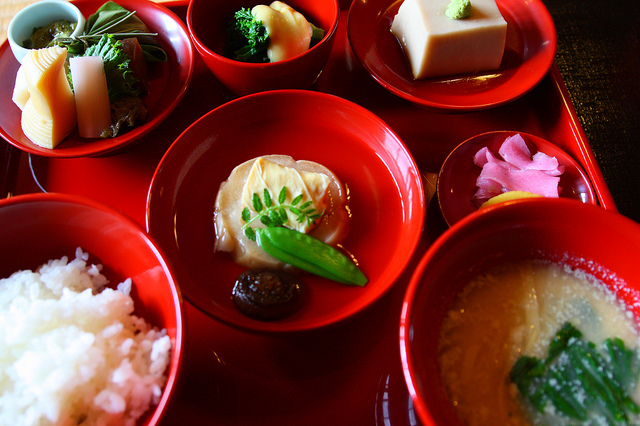Simple but best hospitality with one soup and three side dishes
- HOME
- The concept of one soup and three side dishes
Omotenashi (hospitality) with a bowl of boiled rice,
a Miso soup and one main dish followed by two side dishes.
In the Heian period, banquet cuisine served at the courtyard or to the nobles
was called “Yusoku Ryori” (assorted auspicious dishes served on a table with legs)
From the Kamakura period to Azuchi Momoyama period, “Honnzen Ryori” cuisine
was served to the Samurai, “Shojin Ryori” cuisine without using meat and fish was
served to the monks at Zen temples and then, “Kaiseki Ryori” cuisine evolved from
tea ceremonies. The fusion of these is known as the “Kyoto cuisine.”
When Sen-no-rikyu, a tea master during the Azuchi Momoyama period established
“Wabicha” style of tea ceremony, it changed to a simple cuisine such as “Ichiju Sansai”
(which consists of a bowl of boiled rice, soup dish, a main side dish and two side dishes),
making the spirit of “Omotenashi” (hospitality) more valued.
”Kaiseki” dishes incorporate the spirit of Zen and aesthetics which have been handed
down to modern Kyoto cuisine and developed into a beautiful and unique food culture
that reflects the flavors of the four seasons.

